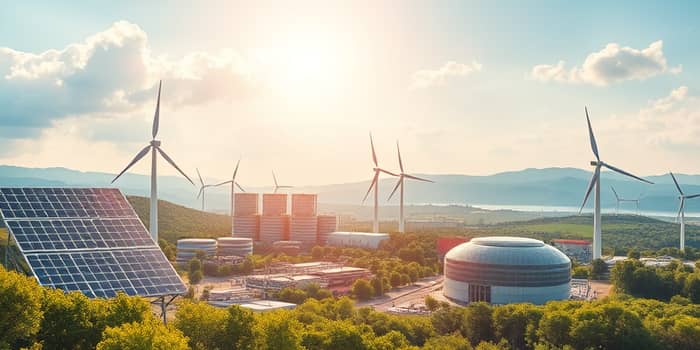
In 2025, climate policy is driving an unprecedented surge in investment into clean energy, adaptation and nature-based solutions around the world. As governments step up commitments and refine frameworks, private and public capital alike are finding new opportunities and de-risked pathways to fund the low-carbon transition. This article explores how policy levers are unlocking green finance, which sectors attract the most capital, and what remains to be done to narrow the climate finance gap.
Across major economies—from the United States and Europe to emerging markets—2025 marks an inflection point where stronger policy signals translate directly into real financial flows. Annual green finance grew by 26% between 2021 and 2023, and new Nationally Determined Contributions (NDCs) and decarbonization roadmaps are sharpening focus on bankable projects. The question is no longer whether capital will follow, but how fast and where.
Earlier this year, the U.S., U.K., and EU announced more ambitious NDCs, accompanied by sector-specific decarbonization strategies for power, transport and heavy industry. Robust regulatory frameworks, tax equity markets, and investor protection measures are converging to create clear, stable, investable climate policies. At global forums like COP30 and the G20 summit, finance ministers and central bankers set targets for integrating climate risks into financial architecture and scaling up climate adaptation funding.
Key policy instruments mobilizing capital include:
These levers reduce uncertainty and enable institutional investors—pension funds, insurance companies, sovereign wealth funds—to allocate more to green bonds and sustainable infrastructure. With strengthened mandates, national development banks and multilateral institutions are also bridging early-stage financing gaps in emerging economies.
While policy ambition is high, translating commitments into on-the-ground investment requires sectoral decarbonization strategies and roadmaps that pinpoint priority technologies and regions. “Investable NDCs” are gaining traction as governments publish detailed investment matrices, outline pipelines of bankable projects, and coordinate public–private partnerships.
Access to capital in developing countries remains a critical barrier. High debt levels and limited fiscal space constrain national budgets, making it hard to co-finance large projects. To address this, policymakers are exploring debt reprofiling and capacity strengthening, along with standardized documentation that reduces transaction costs and opens new financing channels. These efforts help direct private capital to underserved markets, ensuring emerging economies benefit from renewable energy expansion, climate adaptation, and natural capital restoration.
Global green finance is diversifying across technologies and regions. Renewable power—solar, wind, and grid modernization—continues to capture the lion’s share, but other sectors are rapidly scaling up.
Regionally, emerging markets in Africa, Latin America, and Southeast Asia are attracting more green bonds and concessional finance. China remains a powerhouse for renewable buildout, but the focus on investable opportunities in EMDCs is reshaping global capital allocation trends.
To illustrate the scale of investment needed versus current flows, consider the following data:
Institutional investors are moving beyond broad ESG mandates toward targeted allocations in resilience and high-impact decarbonization. Venture capital is no longer confined to early-stage research; it is funding first-of-a-kind demonstration projects and commercial deployments of breakthrough technologies. This shift is driven by:
By channeling capital into mission-focused venture vehicles and green infrastructure bonds, private investors accelerate the scaling of solutions and help overcome the “valley of death” that often stalls climate innovations after prototype stages.
Despite rapid growth, current investment falls short of what’s needed to meet the Paris Agreement goals. Bridging the gap requires heightened policy ambition, deeper public–private collaboration, and improved project pipeline readiness. Key actions include aligning financial regulations globally to ensure coherence in climate reporting and risk management, scaling blended finance instruments to share risk and catalyze commercial co-investment, and strengthening domestic capital markets in emerging economies.
Ultimately, the world’s ability to limit warming to 1.5°C depends on sustained effort. As we move through 2025 and beyond, public and private sectors must synchronize strategies, expedite approvals, and maintain transparency. Every additional billion dollars mobilized through effective policy design brings us closer to a resilient, net-zero future. The next challenge is seizing this momentum to ensure that green capital flows not only accelerate but also deliver equitable and lasting impact across all regions of the globe.
In this new era of climate finance, policy-driven green capital deployment is not just a concept but a tangible force reshaping economies, powering innovation, and safeguarding the planet for generations to come.
References













